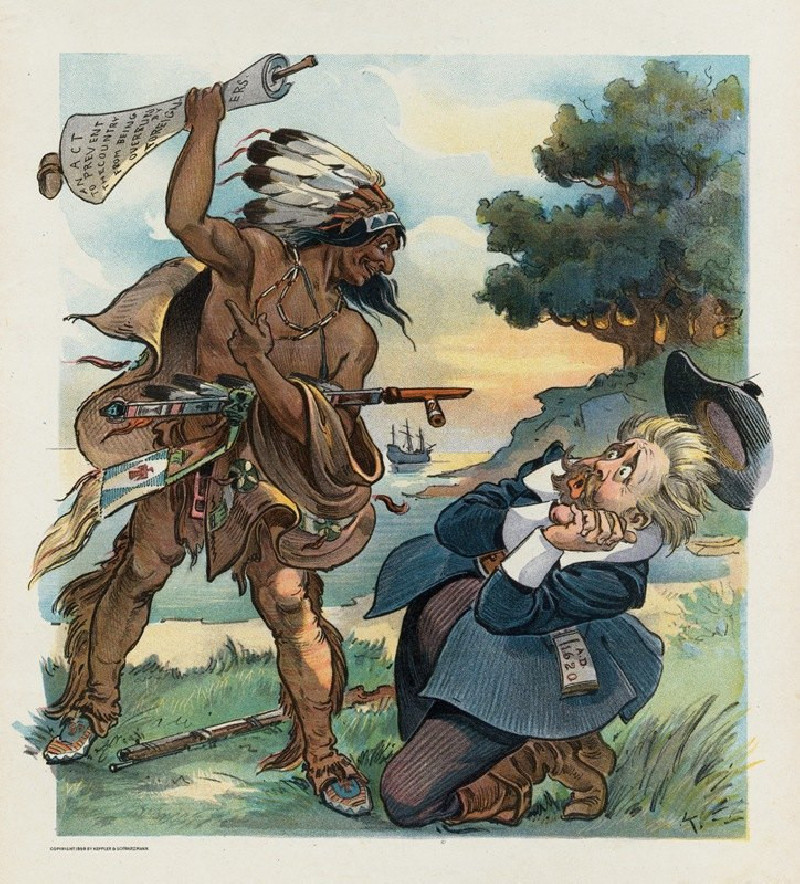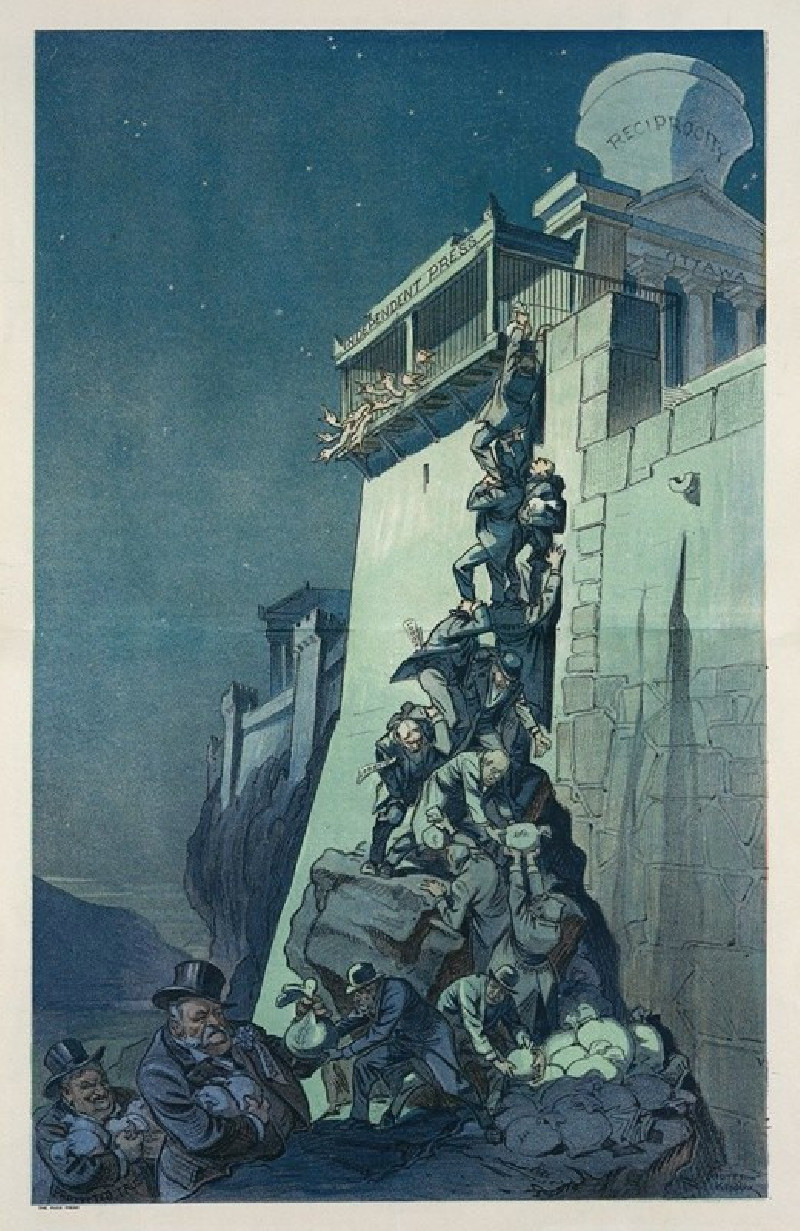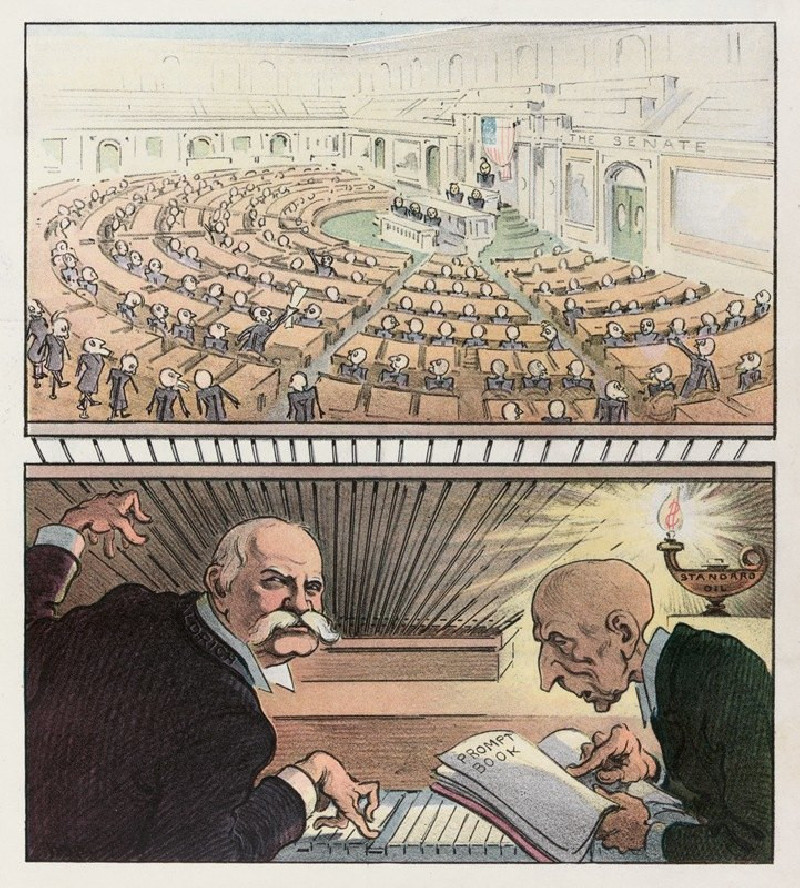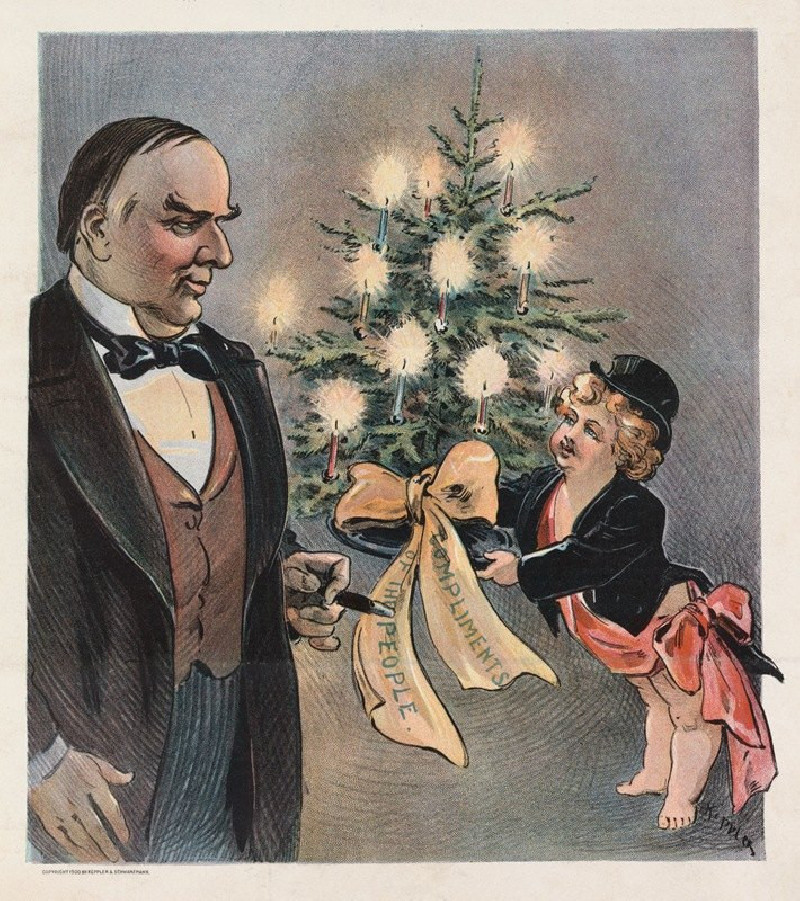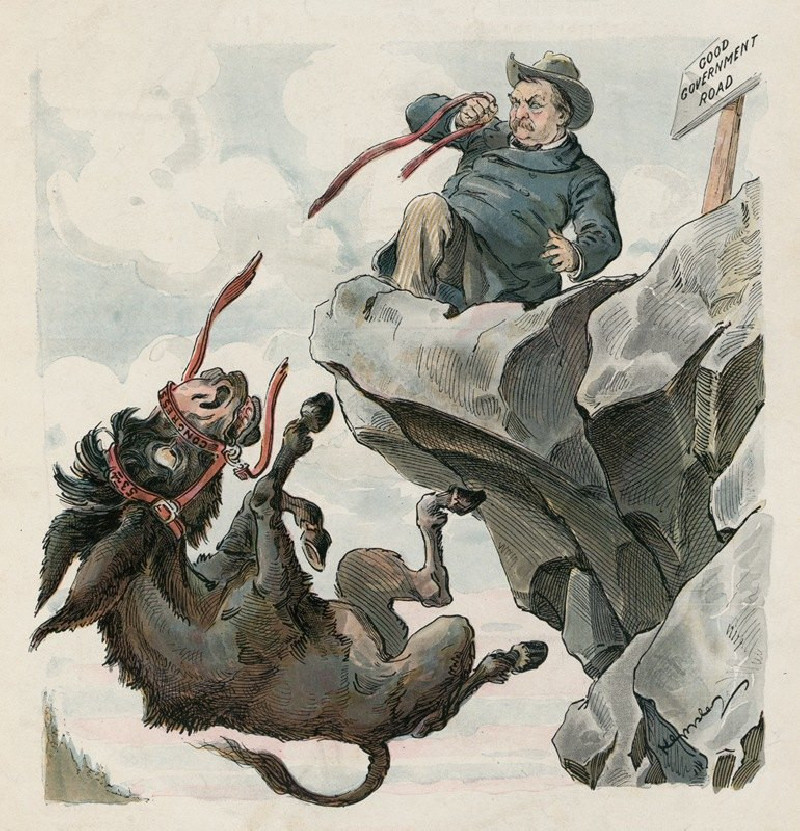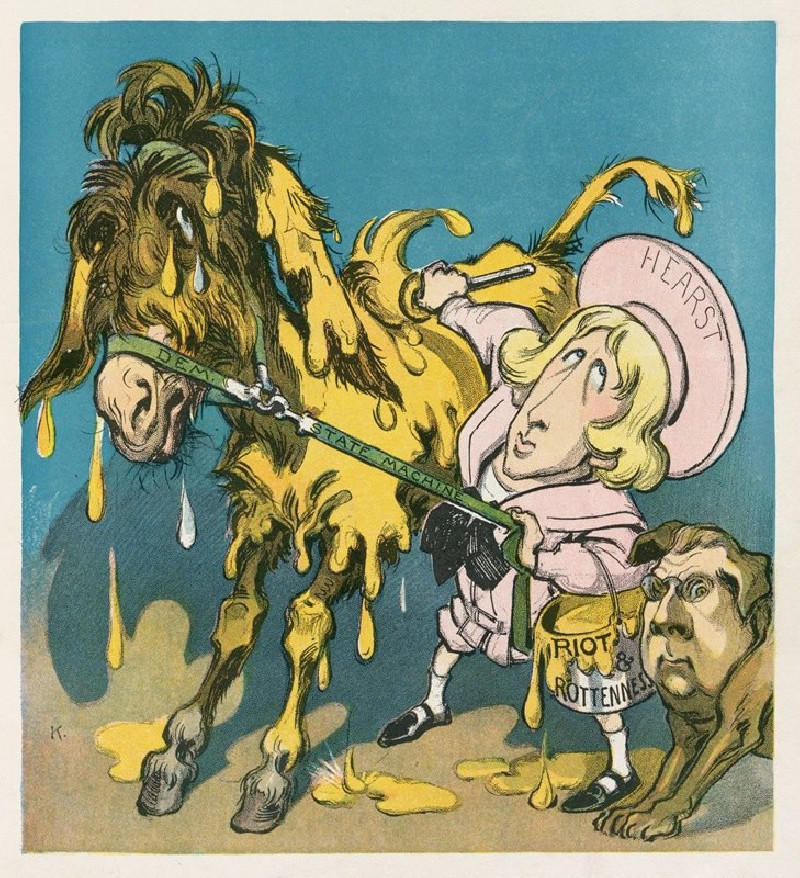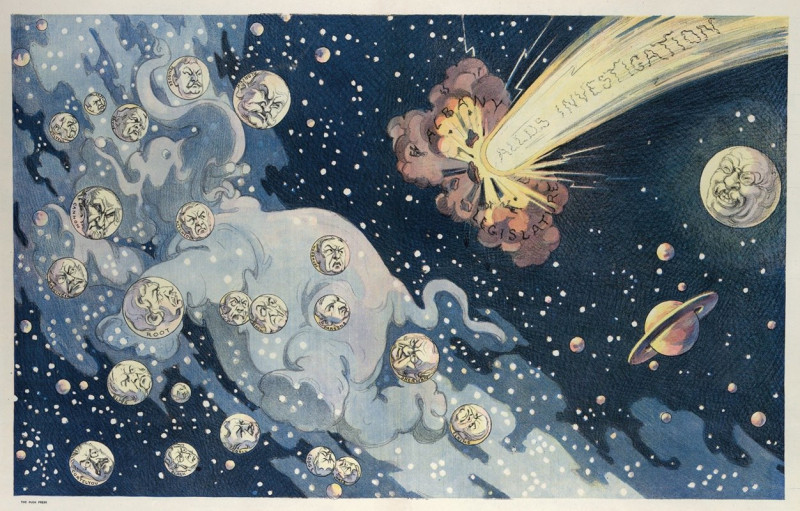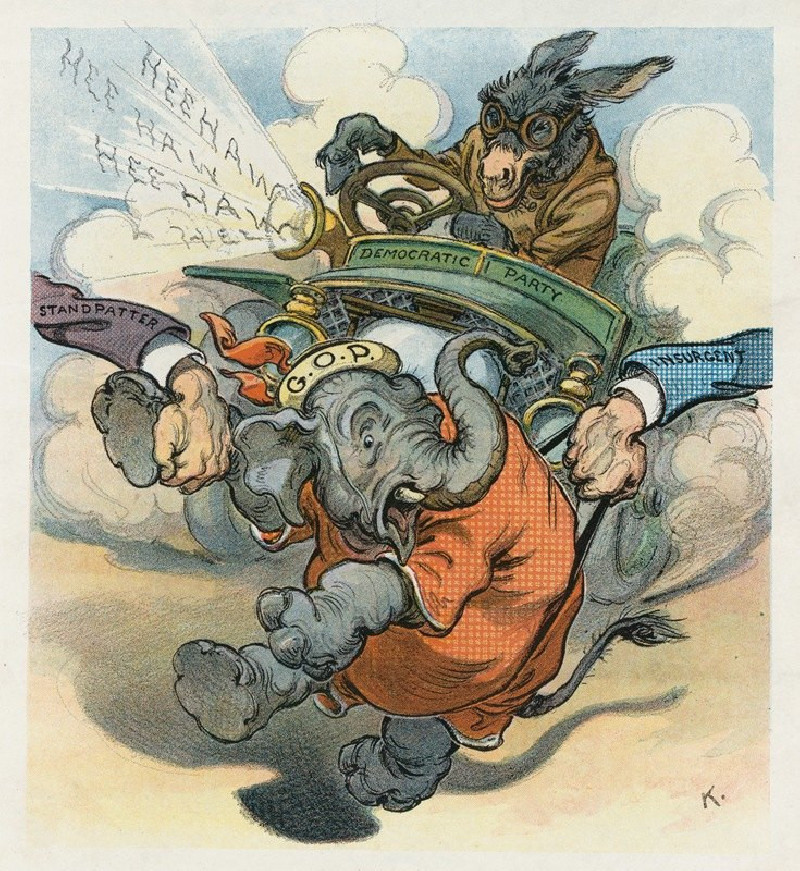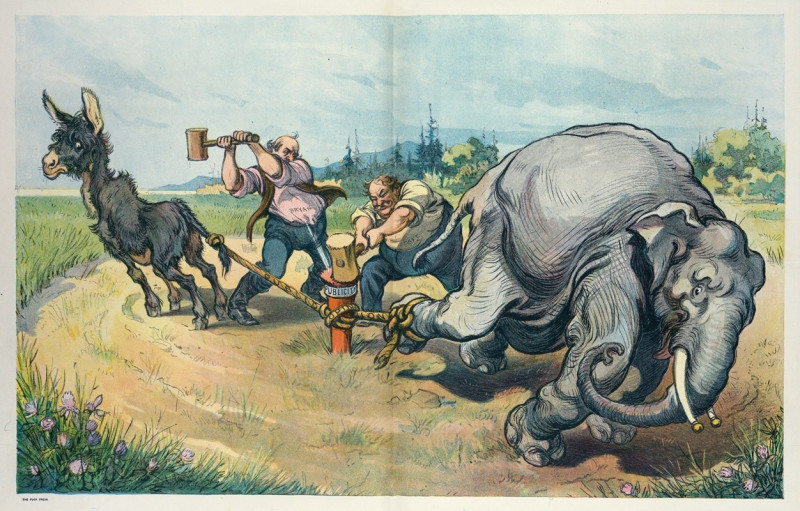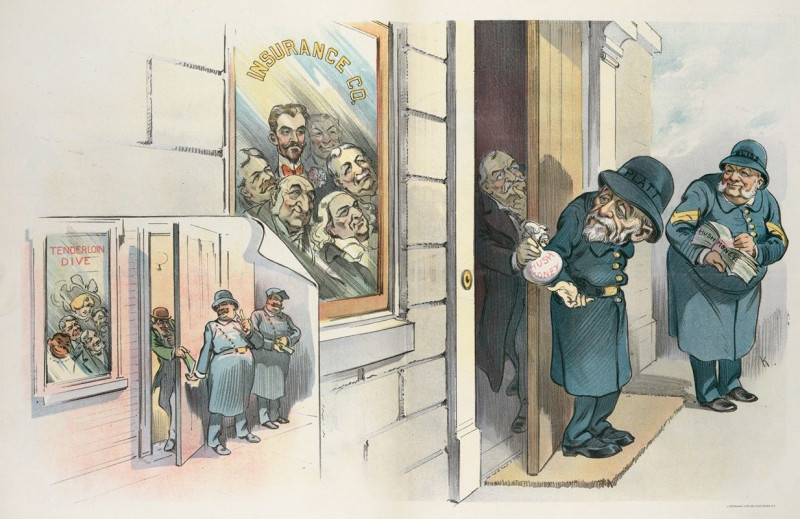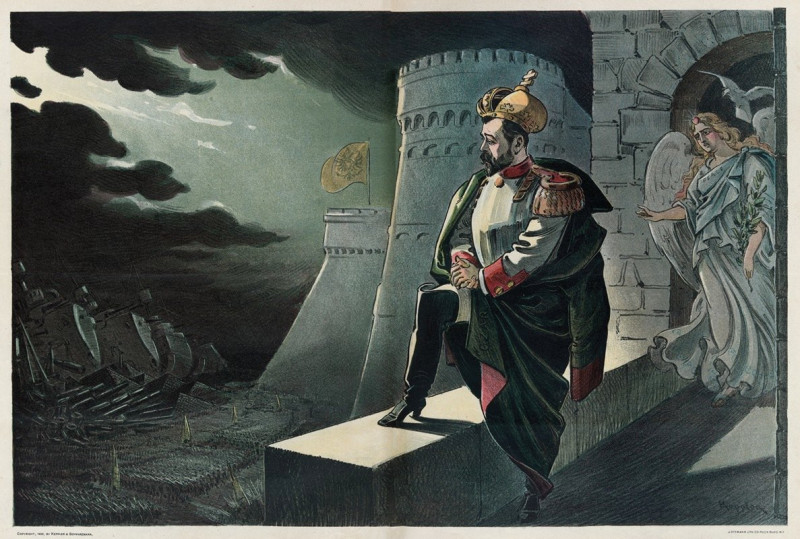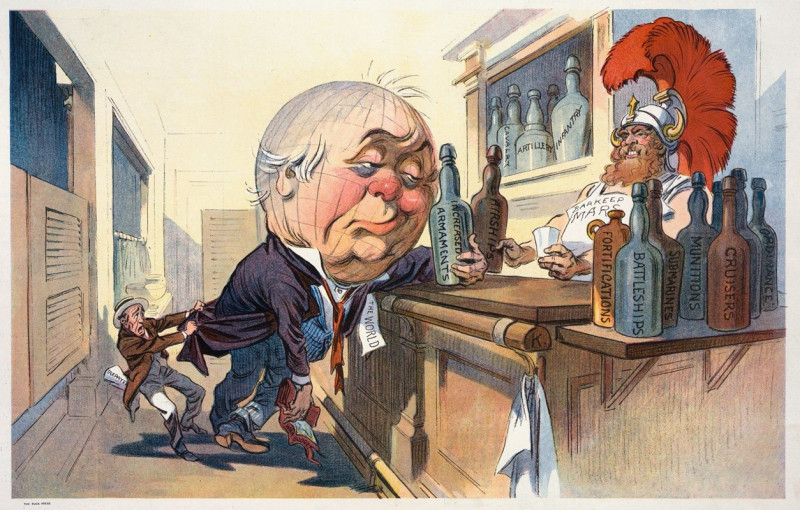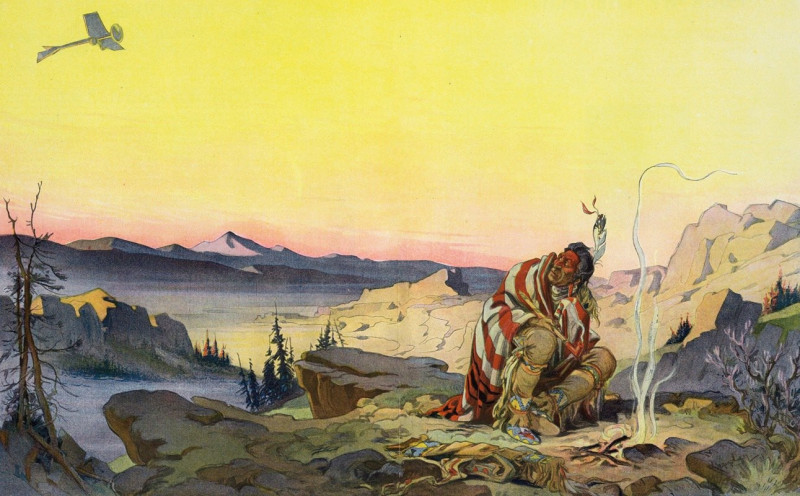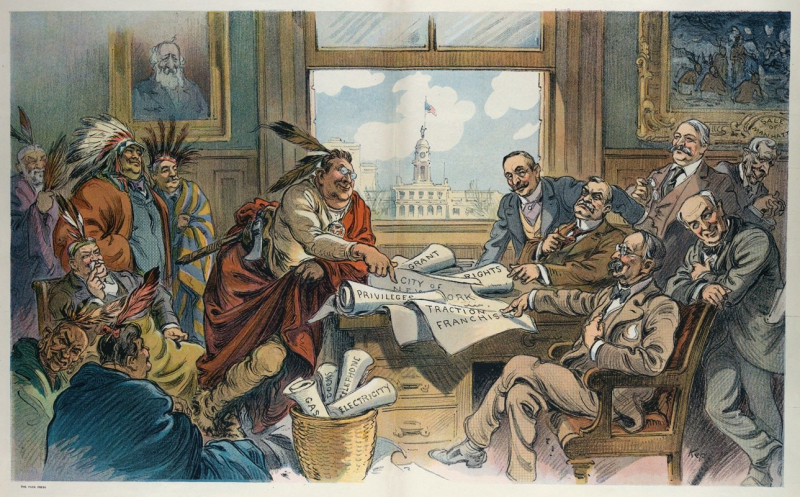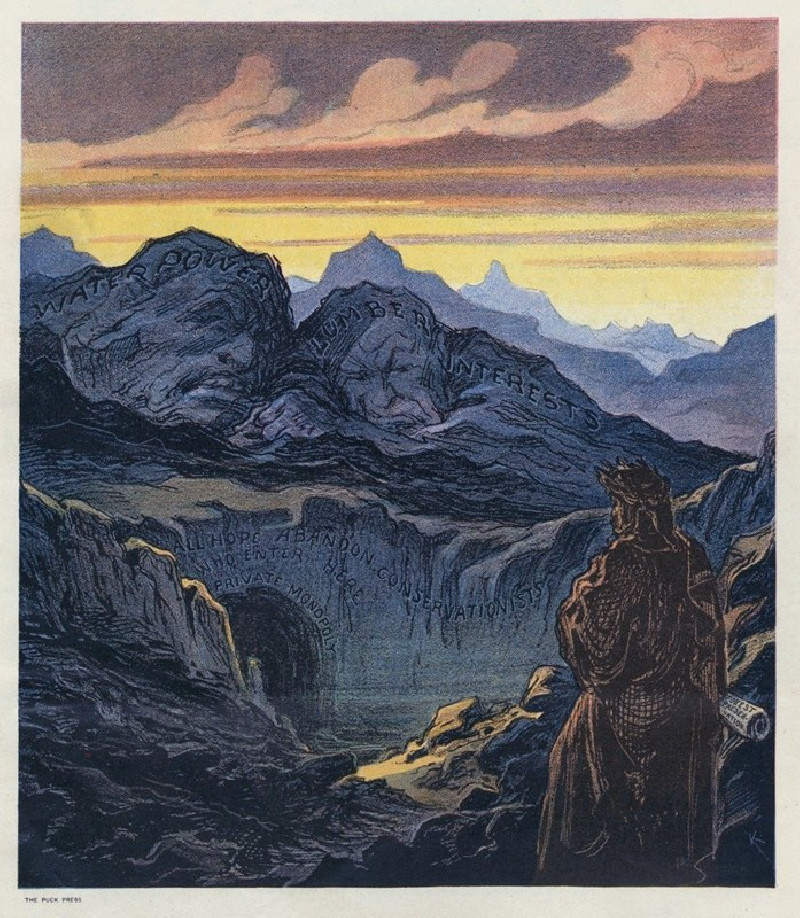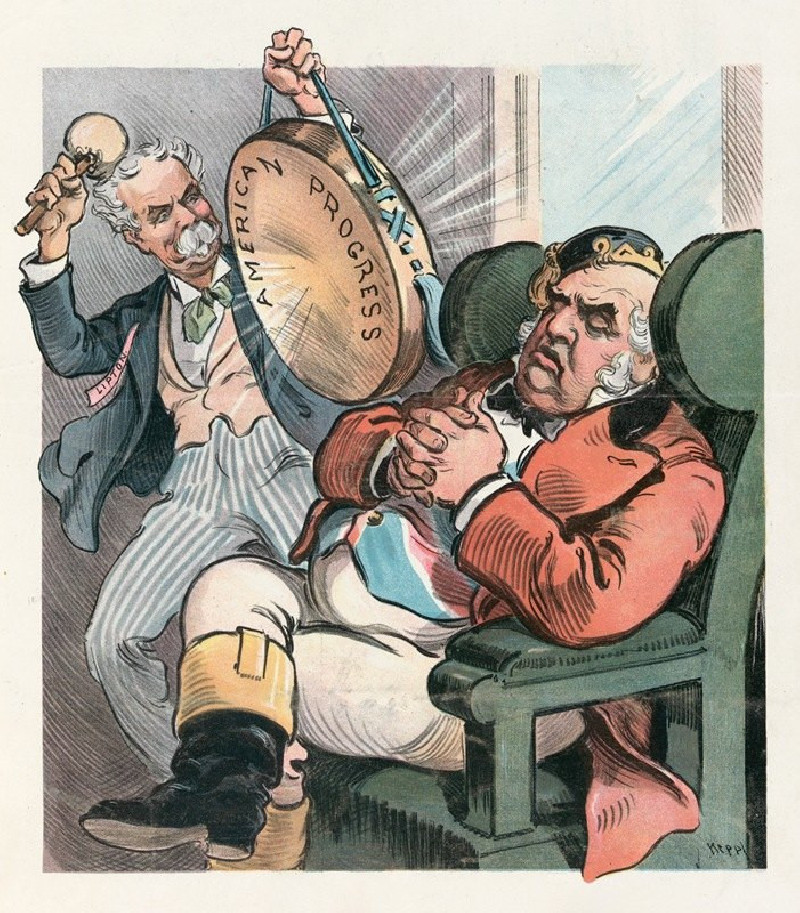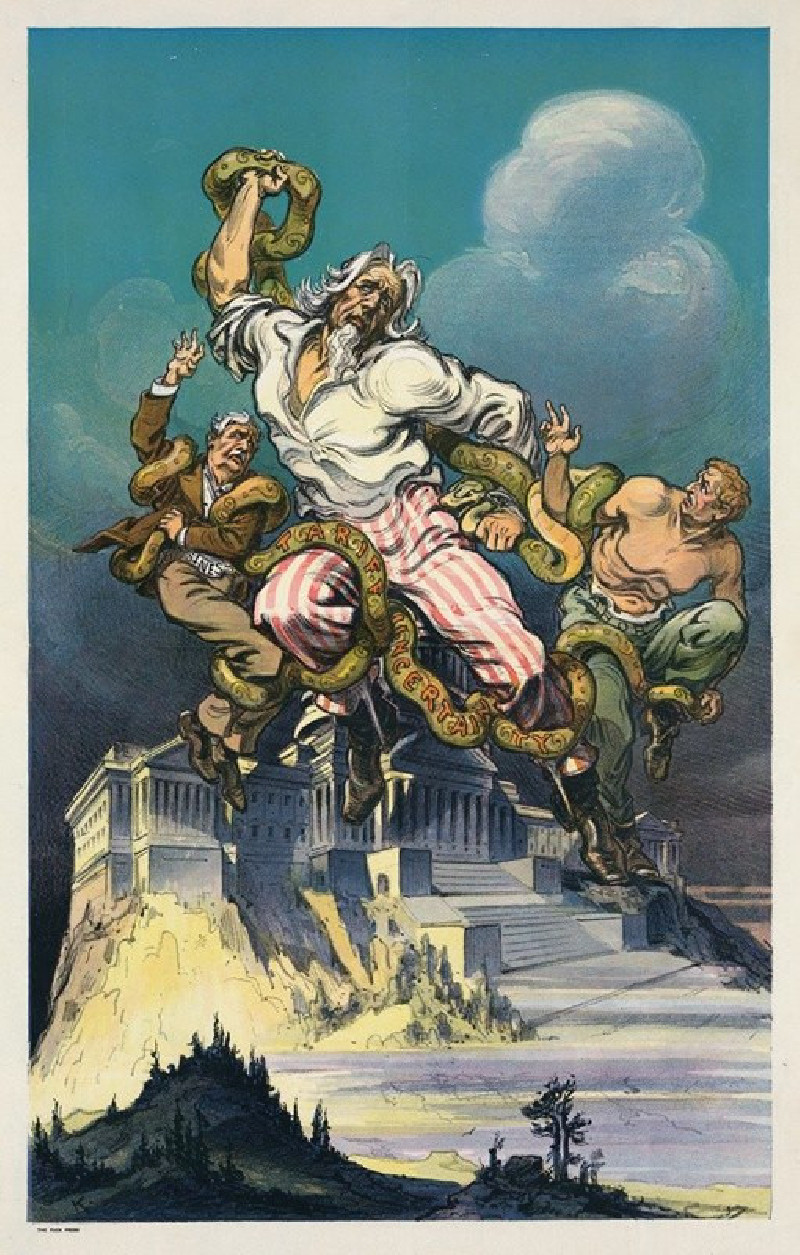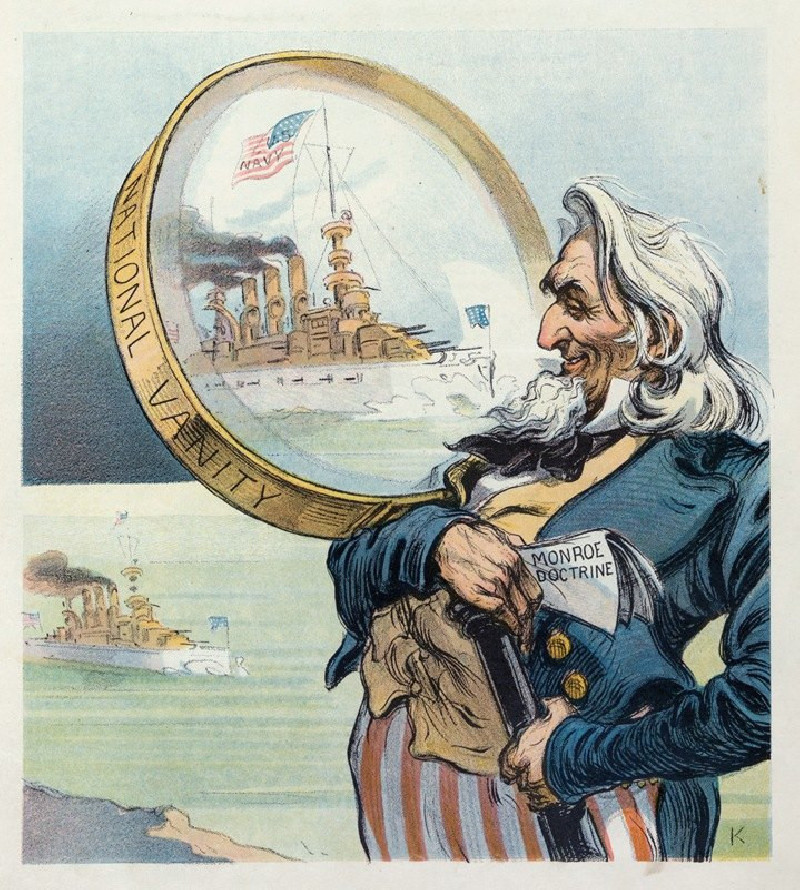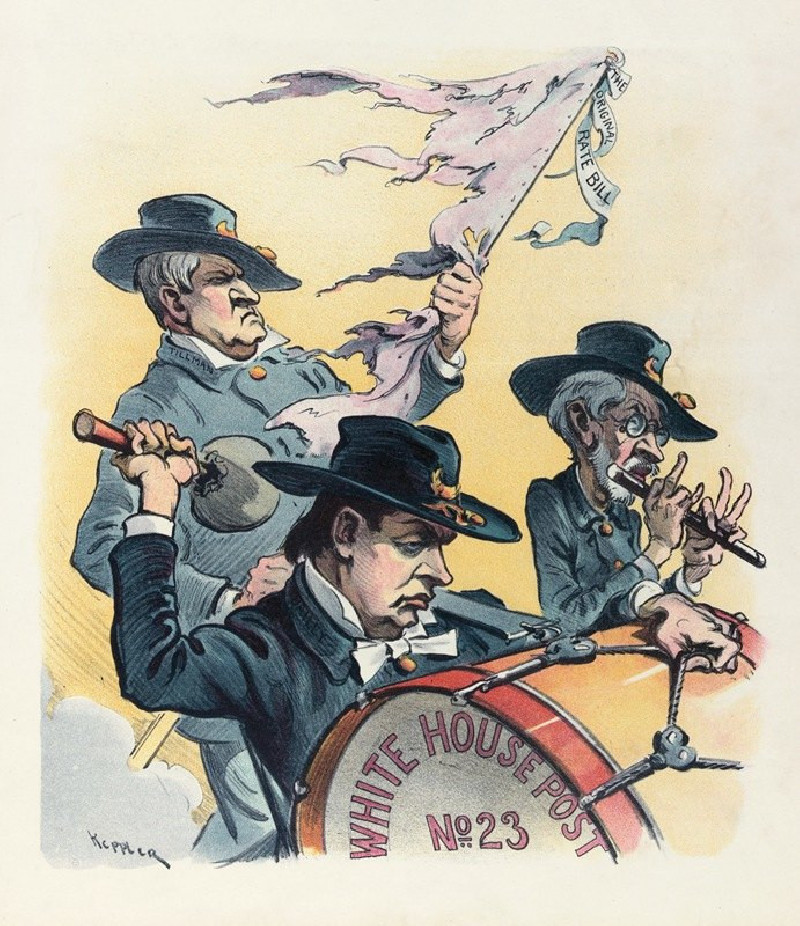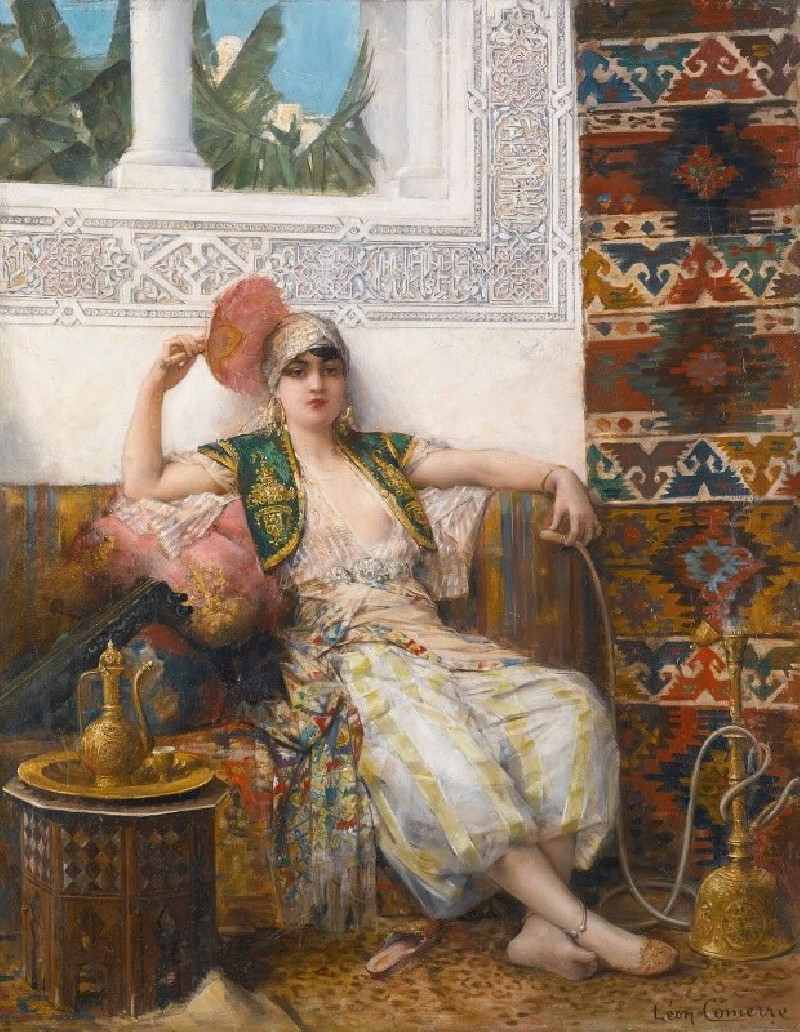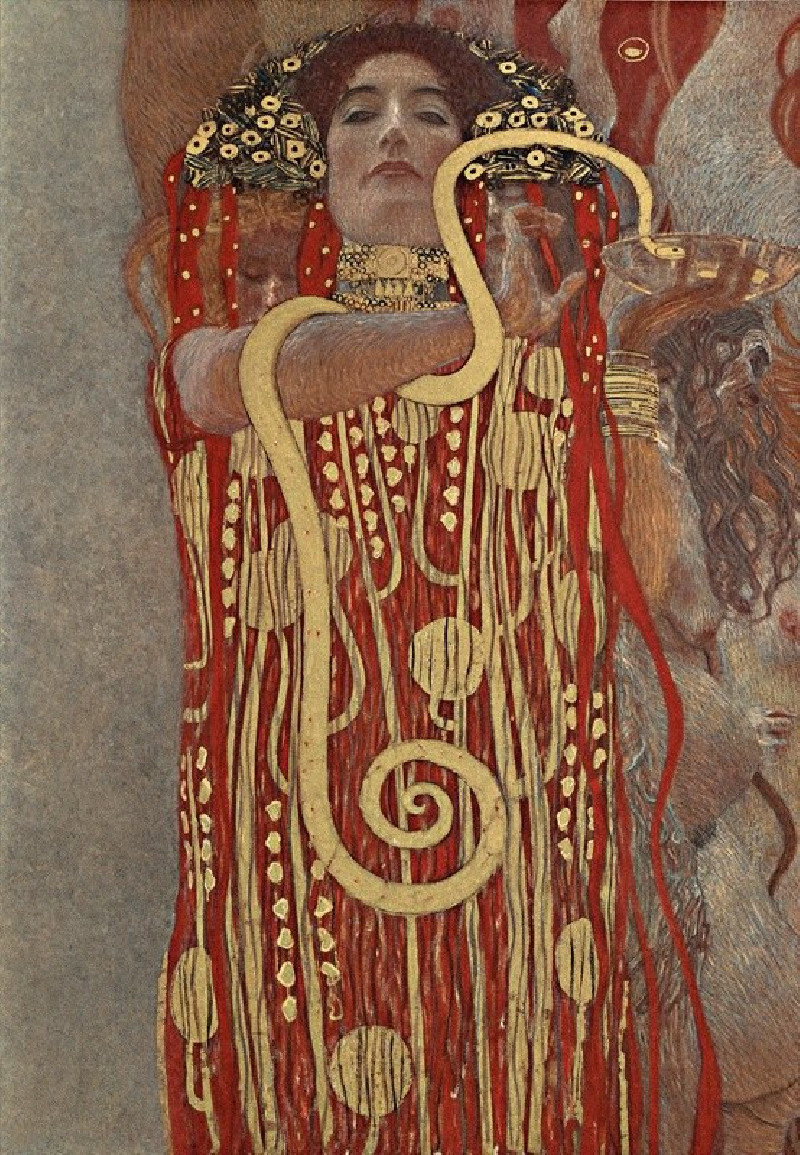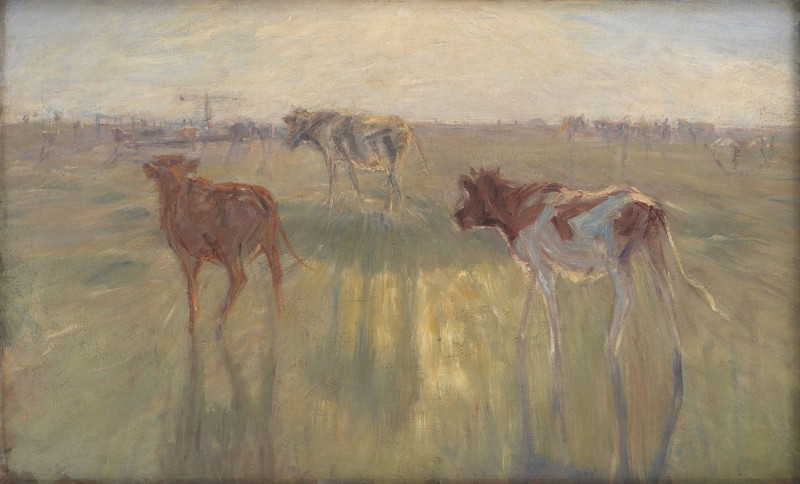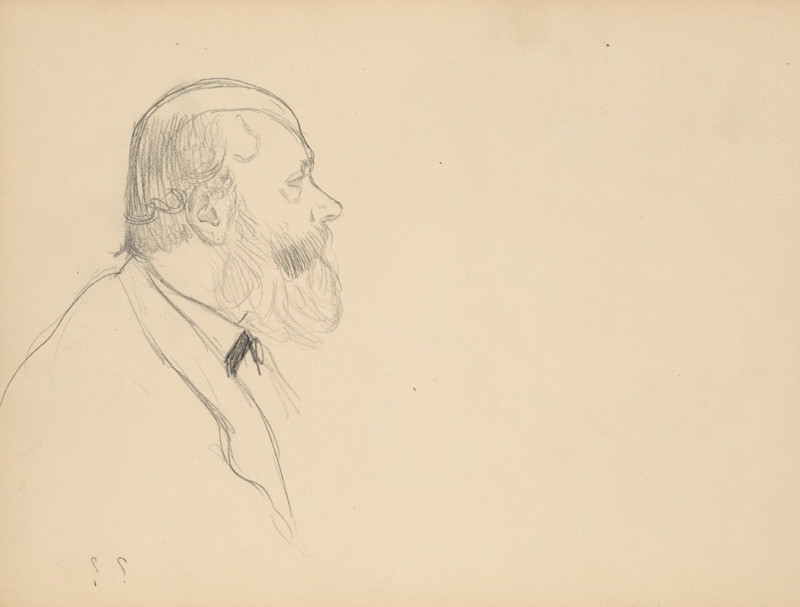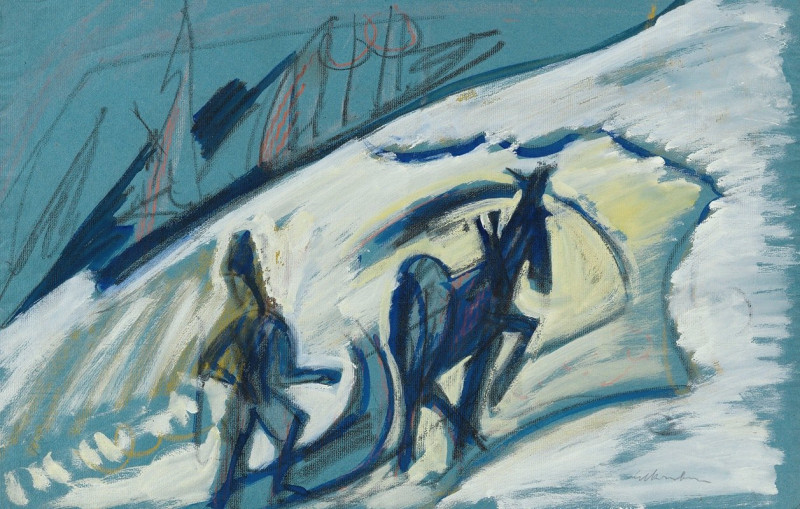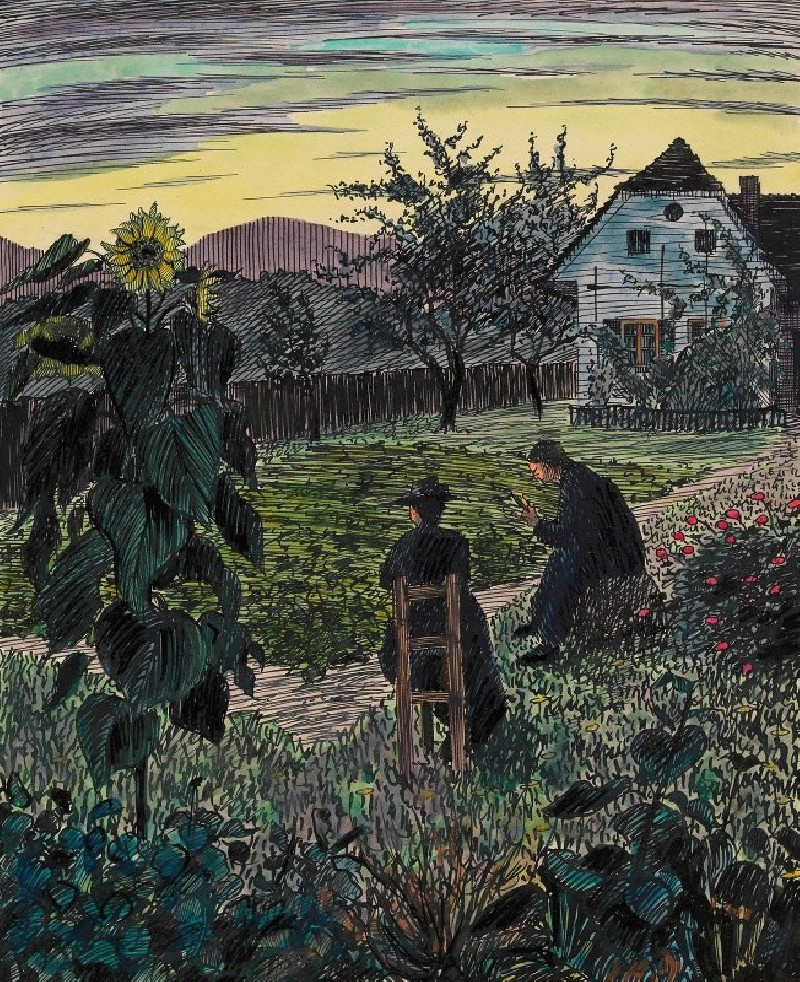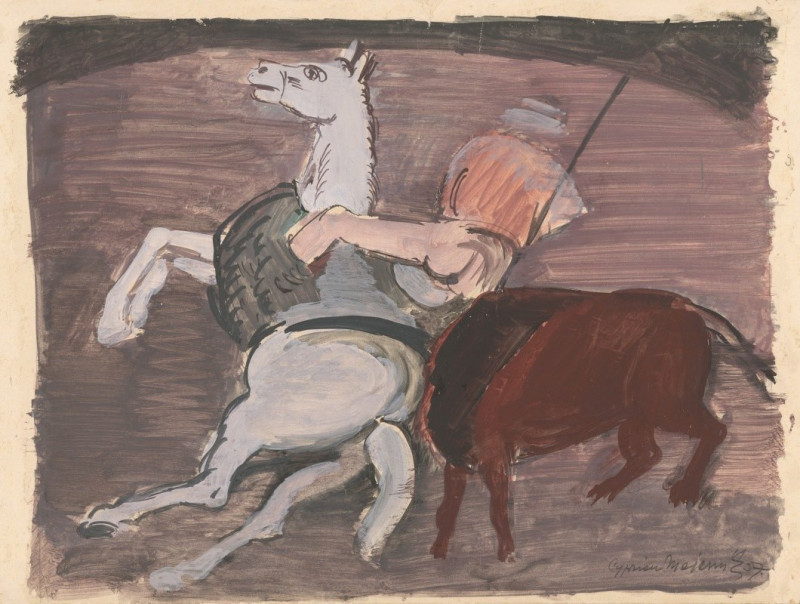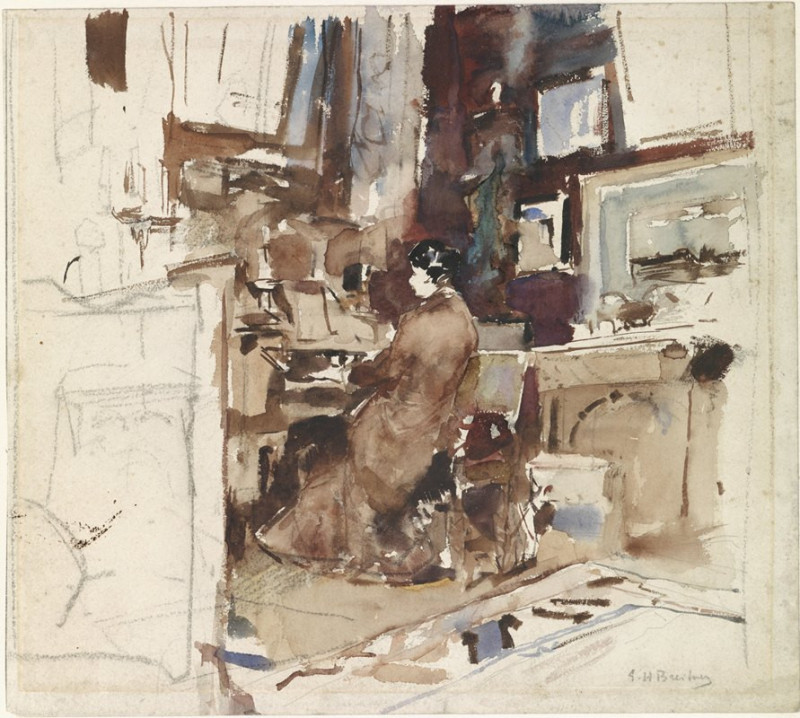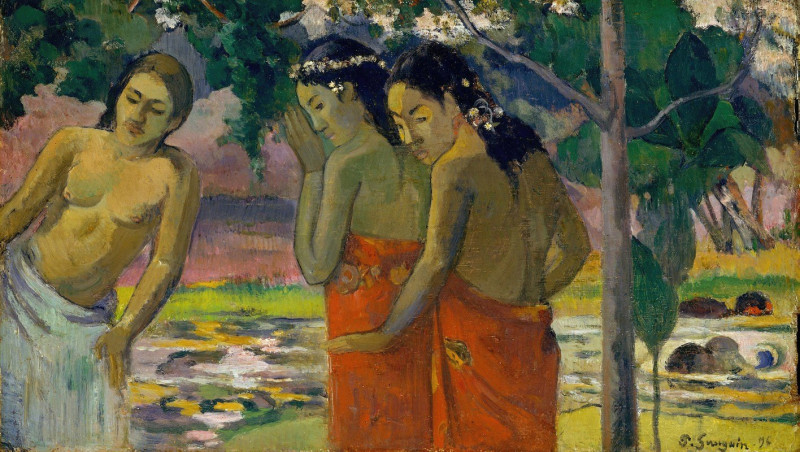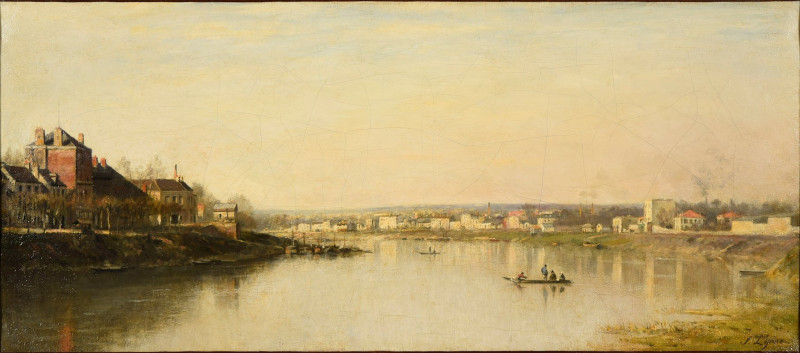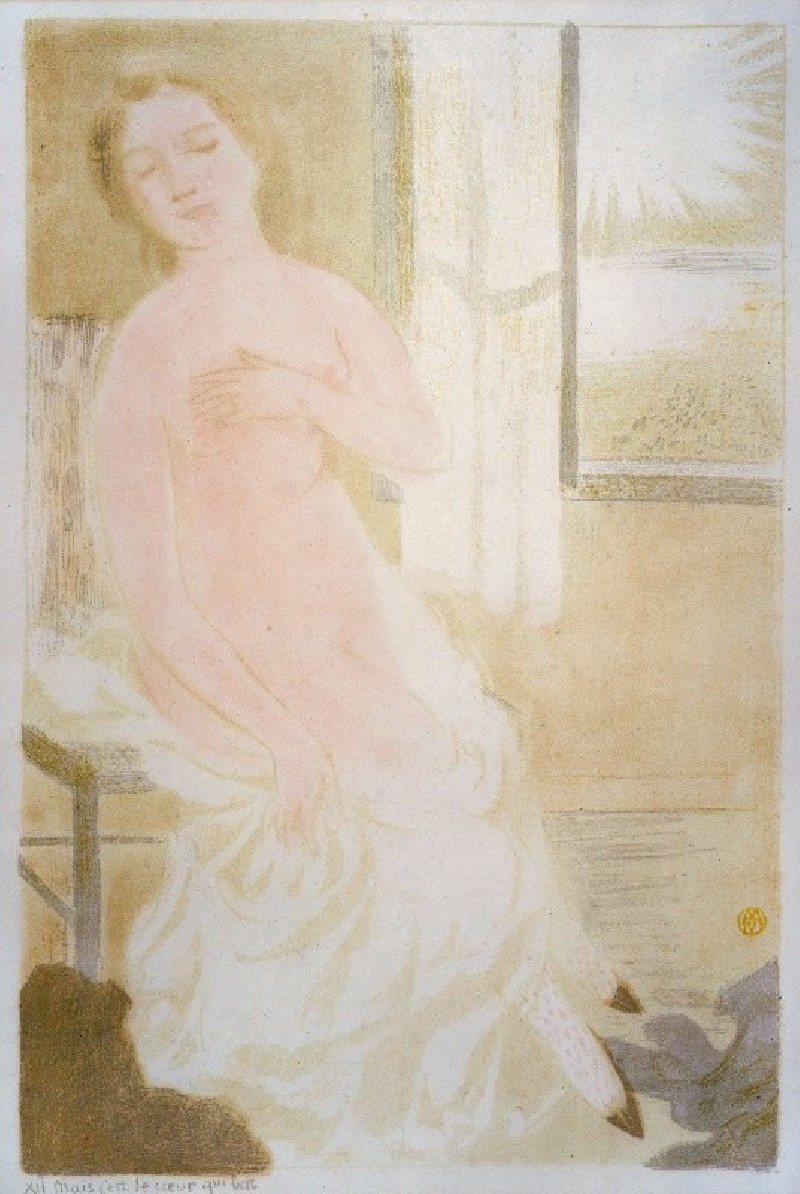Where would we be (1898)
Technique: Giclée quality print
Recommended by our customers
More about this artwork
"Where would we be" (1898) by Udo Keppler presents a vivid and thought-provoking scene set in a historical context, using bold imagery to communicate powerful themes related to colonialism and Native American history. This striking piece depicts an encounter between a Native American warrior and a European settler. The Native American, adorned with traditional attire and headdress, stands dominant and assertive, holding a rifle and a peace pipe, symbols representing both conflict and diplomacy. In his other hand, he holds a document titled "LEASE," indicating issues of land and sovereignty.The European settler, clearly shaken and intimidated, is shown kneeling on the ground, his colonial attire and bewildered expression illustrating his vulnerability. The background subtly features ships near a coastline, suggesting the arrival of Europeans to Native lands.Keppler's artwork serves not only as a reminder of the turbulent interactions between Native Americans and European settlers but also provokes reflection on the broader implications of these historical events. The title, "Where would we be," poses a rhetorical question that encourages viewers to consider the long-term effects of these encounters on the cultural and social landscapes of native communities.As we view this painting, we are urged to reflect on our understanding of history, the narratives we have been taught, and the perspectives that are often overshadowed in mainstream discourse.
Delivery
Returns
Udo J. Keppler, since 1894. known as Joseph Keppler, Jr., was an American political cartoonist, publisher, and Native American advocate. The son of cartoonist Joseph Keppler (1838–1894), who founded Puck magazine, the younger Keppler also contributed to cartoons, and after his father's death became co-owner of the magazine under the name Joseph Keppler. He was also a collector of Native American artifacts.

